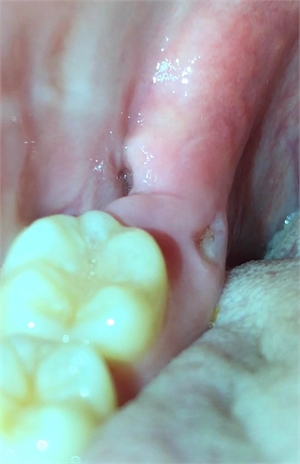What Causes Bone Fragments In Gums? Expert Removal

Bone fragments in the gums, also known as bone sequestra, can be a concerning and painful condition for individuals who experience them. This phenomenon occurs when small pieces of bone become detached from the surrounding jawbone and get embedded in the gum tissue. To understand the causes and appropriate treatment for bone fragments in the gums, it’s essential to delve into the underlying factors and expert removal techniques.
Causes of Bone Fragments in Gums
Several factors can contribute to the development of bone fragments in the gums. Understanding these causes is crucial for effective prevention and treatment:
Tooth Extraction Complications: One of the most common causes of bone fragments in the gums is complications arising from tooth extraction procedures. During the extraction, small pieces of bone can break off and become trapped in the gum tissue. This is more likely to happen if the tooth was removed surgically, especially if it was an impacted tooth.
Periodontal Disease: Advanced periodontal disease can lead to the destruction of the bone that supports the teeth. As the disease progresses, it can cause the bone to fracture into small pieces that then become embedded in the gums.
Trauma to the Jaw: A traumatic injury to the jaw can cause bone fragments to break off and become lodged in the gum tissue. This can happen due to accidents, sports injuries, or any other form of physical trauma to the facial area.
Bone Infections: Infections of the bone, such as osteomyelitis, can weaken the bone structure and lead to the formation of sequestra. These infections can be particularly problematic as they may not respond well to conventional treatments.
Symptoms of Bone Fragments in Gums
Identifying the symptoms of bone fragments in the gums is vital for seeking timely medical intervention. Common symptoms include:
- Pain: Persistent pain in the gum area where the bone fragment is lodged.
- Swelling and Inflammation: The affected gum area may become swollen and inflamed.
- Pus Discharge: In cases of infection, there may be a discharge of pus.
- Visible Bone: In some cases, the bone fragment may be visible through the gum tissue.
Expert Removal of Bone Fragments
The removal of bone fragments from the gums requires expertise and careful consideration to avoid further complications. Here are the general steps involved in the removal process:
Diagnosis: A thorough examination and possibly an X-ray or CT scan to confirm the presence and location of the bone fragment.
Anesthesia: Local anesthesia is typically administered to numb the area and minimize pain during the procedure.
Incision and Debridement: A small incision is made in the gum to access the bone fragment. The area is then cleaned (debrided) of any infected tissue or debris.
Removal of the Bone Fragment: The bone fragment is carefully removed. This may involve smoothing the edges of the remaining bone to prevent future complications.
Closure: The incision is closed, usually with dissolvable sutures, and the area is allowed to heal.
Postoperative Care: Patients are advised on how to care for the affected area during the healing process, including pain management, diet, and oral hygiene practices.
Prevention and Future Directions
Preventing bone fragments in the gums involves maintaining good oral health, avoiding traumatic injuries, and ensuring that any dental procedures are performed by skilled professionals. For individuals who have experienced bone fragments, regular follow-up with a dental professional is crucial to monitor the healing process and address any potential complications early on.
Conclusion
Bone fragments in the gums are a treatable condition that requires prompt attention to prevent further complications. Understanding the causes, recognizing the symptoms, and seeking expert removal are key to resolving this issue and restoring oral health. By combining preventive measures with advanced dental care techniques, individuals can minimize the risk of bone fragments in the gums and maintain a healthy, pain-free smile.
FAQ Section
What are the common causes of bone fragments in the gums?
+Bone fragments in the gums can result from tooth extraction complications, periodontal disease, trauma to the jaw, and bone infections. Each of these conditions can lead to the detachment of small bone pieces that become embedded in the gum tissue.
How are bone fragments in the gums diagnosed?
+Diagnosis typically involves a thorough clinical examination and may include imaging studies such as X-rays or CT scans to confirm the presence and exact location of the bone fragment.
What is the procedure for removing bone fragments from the gums?
+The removal procedure involves administering local anesthesia, making a small incision to access the fragment, debriding the area, carefully removing the bone fragment, and then closing the incision. Postoperative care instructions are provided to ensure proper healing.
Can bone fragments in the gums be prevented?
+While not all cases can be prevented, maintaining good oral hygiene, avoiding dental traumas, and ensuring that dental procedures are performed by skilled professionals can minimize the risk. Regular dental check-ups are also crucial for early detection and treatment of conditions that could lead to bone fragments.